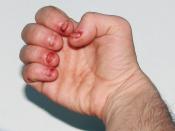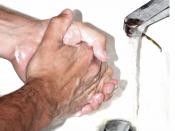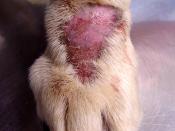Obsessive compulsive disorder is an anxiety disorder that involves characteristics such as obsessions or compulsions. To be diagnosed with OCD, you must exhibit one of those characteristics. An obsession is characterized as reoccurring and unwanted thoughts or feelings. A compulsion is characterized as constant reoccurring behaviors. For example, an obsessive thought could be a person overly worried about germs on their hands; a compulsion behavior could be a person repeatedly washing their hands with soap. The reason people act obsessive compulsive is so they can reduce the anxiety or distress.
It has been assumed that 3.3 million Americans are currently suffering from obsessive compulsive disorder. OCD is most common in young adults, and it is equally present in males and females. The causes of OCD have not been identified but many people believe that a severe trauma or medical problems could have sparked the symptoms of OCD. It is also believed that 20% of OCD sufferers also have motor tics.
Tics are characterized by repeated and involuntary body movements
The symptoms are obsessions or compulsions that cause significant distress or interference with every day life, and are not related to medical illness or drug use. The person recognizes that the behavior is excessive or unreasonable, yet the person has no control over it. Usually, the person's own description of their behavior can lead a diagnosis of OCD. Psychologists also make use of the Yale-Brown Obsessive Compulsive Scale to determine if a person has OCD.
OCD is treated using medications and psychotherapy. The first medication considered is usually an SSRI antidepressant. If SSRI is proven to be ineffective, psychotherapy may be the next response to cure OCD. Psychotherapy may occur on an individual basis or in a group setting, which is used to reduce anxiety, resolve inner conflicts, and provide...


